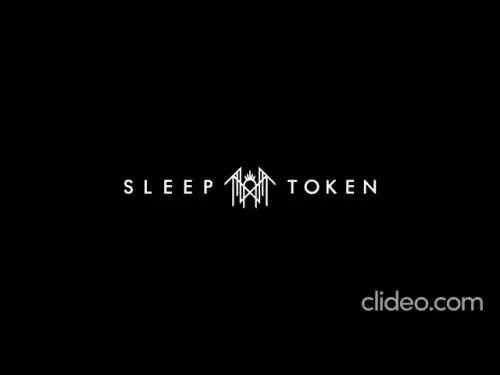-
 Bitcoin
Bitcoin $112200
0.96% -
 Ethereum
Ethereum $4310
0.64% -
 XRP
XRP $2.978
4.28% -
 Tether USDt
Tether USDt $0.9999
-0.02% -
 BNB
BNB $877.9
0.29% -
 Solana
Solana $215.6
6.68% -
 USDC
USDC $0.9997
-0.02% -
 Dogecoin
Dogecoin $0.2387
7.54% -
 TRON
TRON $0.3316
0.73% -
 Cardano
Cardano $0.8633
4.49% -
 Hyperliquid
Hyperliquid $50.46
7.52% -
 Chainlink
Chainlink $23.01
3.82% -
 Ethena USDe
Ethena USDe $1.001
-0.01% -
 Sui
Sui $3.469
2.94% -
 Stellar
Stellar $0.3750
4.79% -
 Bitcoin Cash
Bitcoin Cash $587.2
-2.71% -
 Avalanche
Avalanche $25.48
4.50% -
 Hedera
Hedera $0.2258
3.79% -
 UNUS SED LEO
UNUS SED LEO $9.548
0.05% -
 Litecoin
Litecoin $112.7
-1.24% -
 Cronos
Cronos $0.2527
-2.26% -
 Toncoin
Toncoin $3.098
-0.03% -
 Shiba Inu
Shiba Inu $0.00001287
4.08% -
 Polkadot
Polkadot $4.037
1.46% -
 Uniswap
Uniswap $9.567
3.02% -
 Dai
Dai $0.9997
-0.01% -
 Ethena
Ethena $0.7735
5.26% -
 World Liberty Financial
World Liberty Financial $0.2077
-7.48% -
 Monero
Monero $271.3
0.38% -
 Aave
Aave $302.8
1.35%
Is BOLL effective in a volatile market? How to use it to buy low and sell high?
BOLL, developed by John Bollinger, is effective in volatile crypto markets, helping traders identify overbought and oversold conditions for buying and selling opportunities.
May 21, 2025 at 06:36 pm
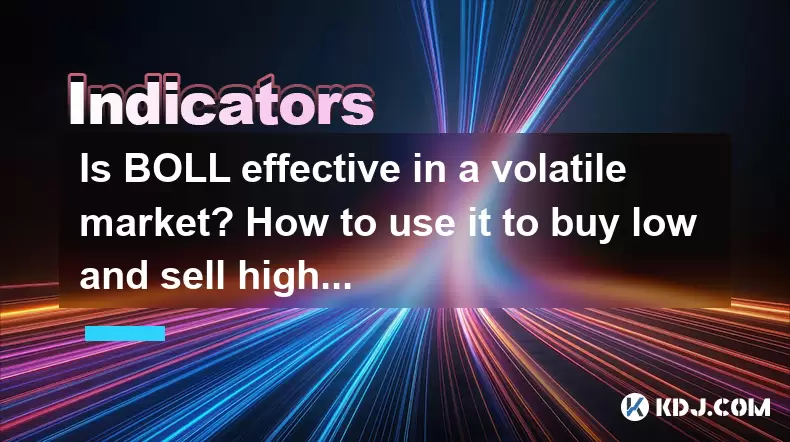
Introduction to BOLL Indicator
The Bollinger Bands (BOLL) indicator is a widely used technical analysis tool in the cryptocurrency market. Developed by John Bollinger, it consists of a moving average and two standard deviation lines plotted above and below the moving average. These bands expand and contract based on market volatility, making BOLL particularly useful in volatile markets. The primary purpose of BOLL is to provide insights into potential price movements, helping traders identify overbought and oversold conditions.
Understanding BOLL in Volatile Markets
In a volatile market, the price of cryptocurrencies can fluctuate significantly within short periods. This volatility can be challenging for traders, but it also presents opportunities for those who can navigate it effectively. BOLL is effective in volatile markets because the bands adjust to the market's volatility, providing dynamic levels of support and resistance. When the market is highly volatile, the bands widen, indicating increased price movement. Conversely, during periods of low volatility, the bands narrow, signaling a potential upcoming significant price movement.
How to Use BOLL to Identify Buying Opportunities
To use BOLL to buy low, traders should focus on the lower band and the price's interaction with it. Here's a detailed approach:
- Watch for the price to touch or cross the lower Bollinger Band: This often indicates that the asset is oversold and may be due for a price rebound.
- Confirm with other indicators: Use additional technical indicators such as the Relative Strength Index (RSI) or the Moving Average Convergence Divergence (MACD) to confirm the oversold condition.
- Look for bullish candlestick patterns: Patterns like the hammer or bullish engulfing can provide further confirmation that a price increase is imminent.
- Set a buy order: Once you have confirmed the oversold condition and identified a bullish signal, place a buy order near the lower Bollinger Band.
How to Use BOLL to Identify Selling Opportunities
To use BOLL to sell high, traders should focus on the upper band and the price's interaction with it. Here's a detailed approach:
- Watch for the price to touch or cross the upper Bollinger Band: This often indicates that the asset is overbought and may be due for a price correction.
- Confirm with other indicators: Use additional technical indicators such as the RSI or MACD to confirm the overbought condition.
- Look for bearish candlestick patterns: Patterns like the shooting star or bearish engulfing can provide further confirmation that a price decrease is imminent.
- Set a sell order: Once you have confirmed the overbought condition and identified a bearish signal, place a sell order near the upper Bollinger Band.
Practical Example of Using BOLL in a Volatile Market
Let's consider a practical example of using BOLL in a volatile market to buy low and sell high. Suppose you are trading Bitcoin (BTC) during a period of high volatility.
- Identify the lower Bollinger Band: You notice that the price of BTC has touched the lower Bollinger Band, indicating an oversold condition.
- Confirm with RSI: You check the RSI, which is below 30, further confirming that BTC is oversold.
- Look for bullish patterns: You observe a hammer candlestick pattern forming at the lower Bollinger Band, suggesting a potential price increase.
- Place a buy order: You place a buy order near the lower Bollinger Band, anticipating a price rebound.
A few days later, the price of BTC begins to rise.
- Identify the upper Bollinger Band: You notice that the price of BTC has touched the upper Bollinger Band, indicating an overbought condition.
- Confirm with RSI: You check the RSI, which is above 70, further confirming that BTC is overbought.
- Look for bearish patterns: You observe a shooting star candlestick pattern forming at the upper Bollinger Band, suggesting a potential price decrease.
- Place a sell order: You place a sell order near the upper Bollinger Band, anticipating a price correction.
Adjusting BOLL Settings for Different Cryptocurrencies
Different cryptocurrencies may exhibit varying levels of volatility, requiring adjustments to the BOLL settings. Here's how to adjust the settings for different assets:
- Standard deviation: The default setting for the standard deviation is usually 2. However, in highly volatile markets, you might want to increase this to 2.5 or 3 to widen the bands and reduce false signals. Conversely, in less volatile markets, you might decrease it to 1.5 or 1 to narrow the bands and capture smaller price movements.
- Moving average period: The default period for the moving average is usually 20 periods. For more sensitive signals, you might reduce this to 10 periods. For less sensitive signals, you might increase it to 50 periods.
- Experiment and backtest: Always experiment with different settings and backtest them using historical data to find the most effective configuration for the specific cryptocurrency you are trading.
Combining BOLL with Other Technical Indicators
While BOLL can be effective on its own, combining it with other technical indicators can enhance its accuracy and reliability. Here are some common combinations:
- BOLL and RSI: The RSI helps confirm overbought and oversold conditions identified by BOLL. When the price touches the lower Bollinger Band and the RSI is below 30, it's a strong buy signal. When the price touches the upper Bollinger Band and the RSI is above 70, it's a strong sell signal.
- BOLL and MACD: The MACD can help confirm trend reversals. When the price touches the lower Bollinger Band and the MACD line crosses above the signal line, it's a bullish signal. When the price touches the upper Bollinger Band and the MACD line crosses below the signal line, it's a bearish signal.
- BOLL and volume: Volume can confirm the strength of a price move. When the price touches the lower Bollinger Band and volume increases, it suggests strong buying pressure. When the price touches the upper Bollinger Band and volume increases, it suggests strong selling pressure.
FAQs
Q: Can BOLL be used effectively in all market conditions?A: While BOLL is particularly effective in volatile markets, it can also be used in less volatile conditions. However, traders may need to adjust the settings and combine it with other indicators to achieve optimal results.
Q: How often should I adjust the BOLL settings?A: The frequency of adjusting BOLL settings depends on the specific cryptocurrency and market conditions. It's recommended to review and adjust the settings periodically, especially when there are significant changes in market volatility.
Q: Are there any risks associated with using BOLL to buy low and sell high?A: Yes, like any trading strategy, using BOLL to buy low and sell high comes with risks. False signals can occur, especially in highly volatile markets, leading to potential losses. It's crucial to use additional indicators and risk management techniques to mitigate these risks.
Q: Can BOLL be used for long-term trading strategies?A: While BOLL is often used for short-term trading, it can also be adapted for long-term strategies. Adjusting the moving average period to a longer timeframe, such as 50 or 200 periods, can help identify longer-term trends and potential entry and exit points.
Disclaimer:info@kdj.com
The information provided is not trading advice. kdj.com does not assume any responsibility for any investments made based on the information provided in this article. Cryptocurrencies are highly volatile and it is highly recommended that you invest with caution after thorough research!
If you believe that the content used on this website infringes your copyright, please contact us immediately (info@kdj.com) and we will delete it promptly.
- Worldcoin's Wild Ride: Treasury Tactics and Price Gains, a New York Minute
- 2025-09-09 14:25:15
- Hotcoin Lists Luxury Travel Token (LTT): Your Ticket to Crypto-Fueled Luxury?
- 2025-09-09 14:25:15
- Household Debt: Peeking into the 2025 Crystal Ball
- 2025-09-09 12:25:15
- Bitcoin Core, Censorship, and the Ordinals Leader: A Showdown Looms?
- 2025-09-09 12:25:15
- Bitcoin, Solana, and Hacks: Navigating the Crypto Minefield, the New York Way
- 2025-09-09 12:30:12
- AI Models, Bitcoin Trend, and the September Shock: What's the Deal?
- 2025-09-09 12:30:12
Related knowledge
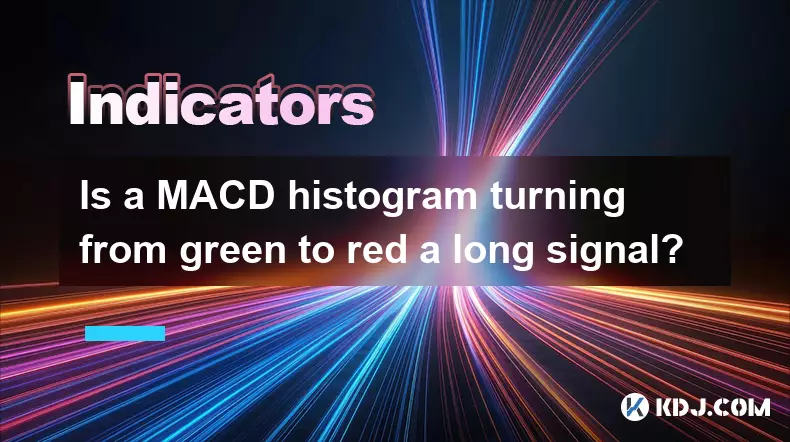
Is a MACD histogram turning from green to red a long signal?
Sep 09,2025 at 01:54pm
Understanding the MACD Histogram in Crypto Trading1. The MACD (Moving Average Convergence Divergence) histogram is a visual representation of the diff...
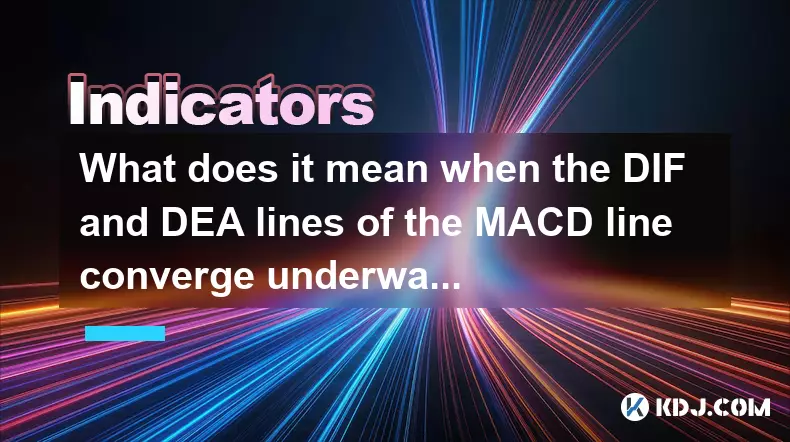
What does it mean when the DIF and DEA lines of the MACD line converge underwater?
Sep 09,2025 at 07:55am
Understanding MACD Components in Bearish Territory1. The MACD indicator consists of three elements: the DIF (Difference), DEA (Signal line), and the M...
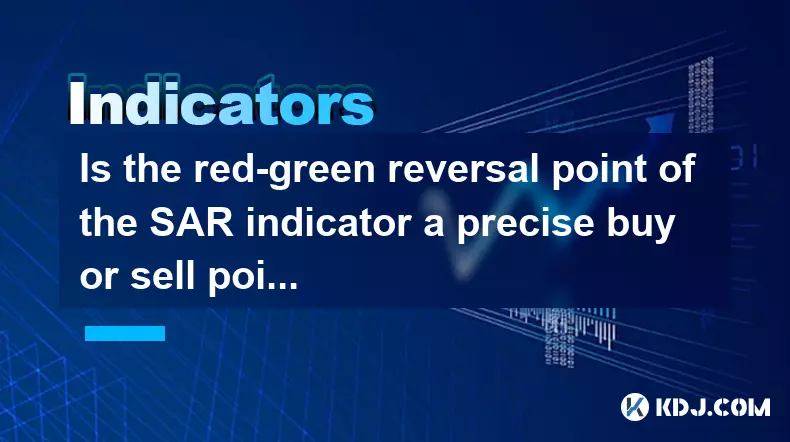
Is the red-green reversal point of the SAR indicator a precise buy or sell point?
Sep 09,2025 at 11:18am
Understanding the SAR Indicator in Cryptocurrency TradingThe SAR (Stop and Reverse) indicator, developed by J. Welles Wilder Jr., is a popular tool us...
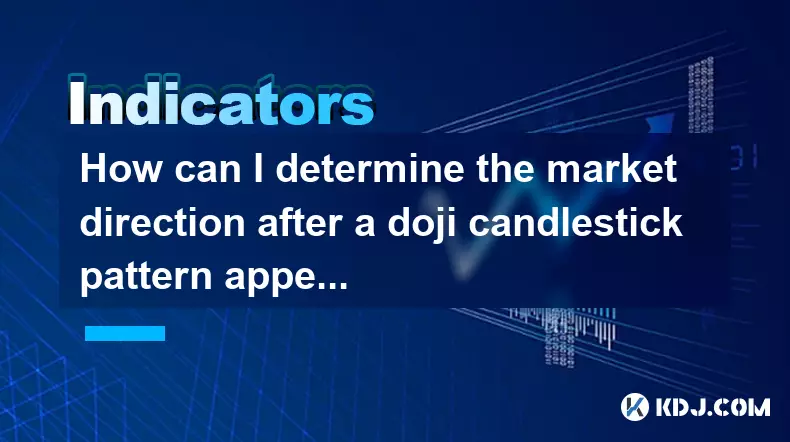
How can I determine the market direction after a doji candlestick pattern appears?
Sep 09,2025 at 05:37am
Understanding the Doji Candlestick in Crypto Markets1. The doji candlestick is a critical formation that signals indecision between buyers and sellers...
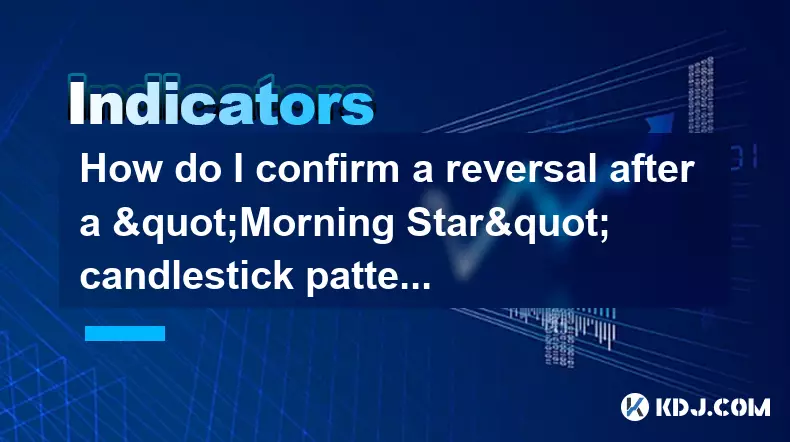
How do I confirm a reversal after a "Morning Star" candlestick pattern appears?
Sep 09,2025 at 05:19am
Understanding the Morning Star Candlestick Pattern1. The Morning Star is a bullish reversal pattern that typically forms at the end of a downtrend. It...
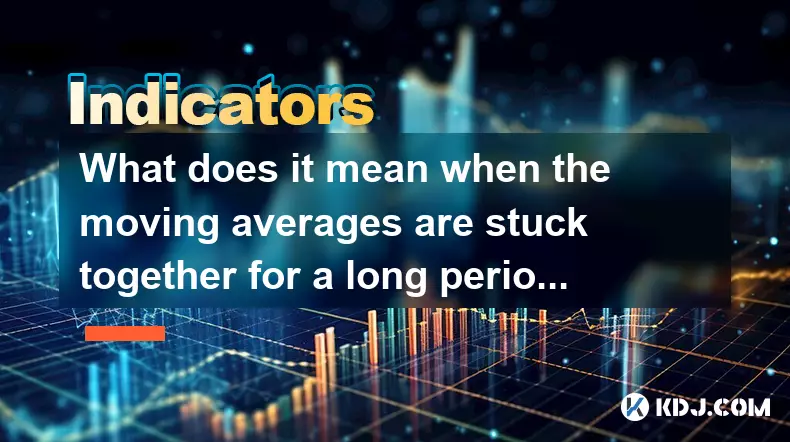
What does it mean when the moving averages are stuck together for a long period of time?
Sep 09,2025 at 02:19pm
What Happens When Moving Averages Cluster Together?When moving averages remain tightly grouped over an extended duration, it signals a phase of market...

Is a MACD histogram turning from green to red a long signal?
Sep 09,2025 at 01:54pm
Understanding the MACD Histogram in Crypto Trading1. The MACD (Moving Average Convergence Divergence) histogram is a visual representation of the diff...

What does it mean when the DIF and DEA lines of the MACD line converge underwater?
Sep 09,2025 at 07:55am
Understanding MACD Components in Bearish Territory1. The MACD indicator consists of three elements: the DIF (Difference), DEA (Signal line), and the M...

Is the red-green reversal point of the SAR indicator a precise buy or sell point?
Sep 09,2025 at 11:18am
Understanding the SAR Indicator in Cryptocurrency TradingThe SAR (Stop and Reverse) indicator, developed by J. Welles Wilder Jr., is a popular tool us...

How can I determine the market direction after a doji candlestick pattern appears?
Sep 09,2025 at 05:37am
Understanding the Doji Candlestick in Crypto Markets1. The doji candlestick is a critical formation that signals indecision between buyers and sellers...

How do I confirm a reversal after a "Morning Star" candlestick pattern appears?
Sep 09,2025 at 05:19am
Understanding the Morning Star Candlestick Pattern1. The Morning Star is a bullish reversal pattern that typically forms at the end of a downtrend. It...

What does it mean when the moving averages are stuck together for a long period of time?
Sep 09,2025 at 02:19pm
What Happens When Moving Averages Cluster Together?When moving averages remain tightly grouped over an extended duration, it signals a phase of market...
See all articles

























